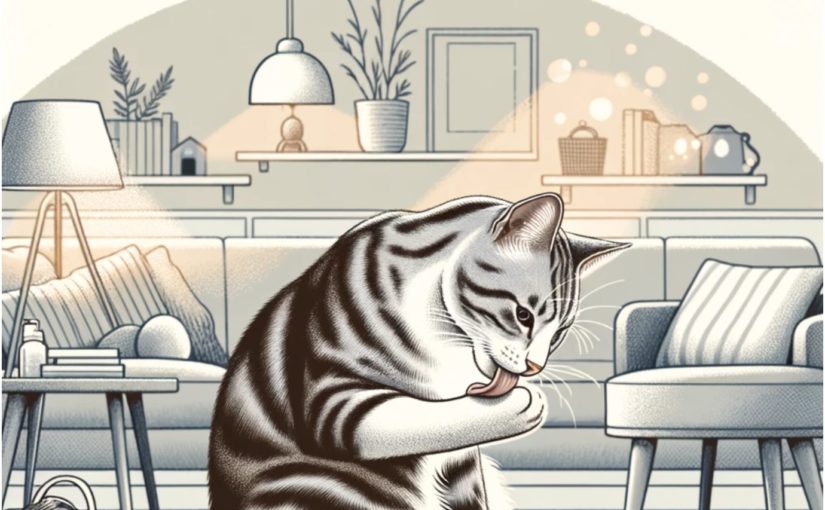Have you noticed your feline friend spending an unusual amount of time licking themselves, resulting in hair loss or skin irritation? If yes, you might be witnessing a case of over-grooming. Often grooming is more than just a cleanliness ritual—it’s a way to relax, to bond, and sometimes, a tell-tale sign of underlying issues. Let’s unravel the mystery of cat over-grooming together, exploring its causes and discovering ways to lend a helping hand.
Understanding Over-Grooming
Cats are known for their meticulous grooming habits. But when grooming crosses the line into obsessive or compulsive behavior, it can indicate health or emotional challenges. Over-grooming, or psychogenic alopecia, involves cats licking, biting, or scratching themselves more than necessary for cleanliness, often leading to bald patches or skin lesions.
Physical Causes: When The Body Speaks
Physical triggers for over-grooming often include:
- Allergies: Just like humans, cats can have allergic reactions to food, pollen, or even household products, leading to itchy skin and excessive grooming.
- Parasites: Fleas, mites, or lice can make your cat’s skin their unwelcome playground, causing irritation and, you guessed it, over-grooming.
- Pain and Discomfort: Sometimes, the issue might be internal—arthritis, dental pain, or other discomforts can lead to excessive licking of the painful area.
Psychological Triggers: Mind Matters
Cats are sensitive creatures, and their emotional well-being is just as crucial as their physical health. Some psychological causes include:
- Stress and Anxiety: Changes in their environment, the arrival of a new pet, or even a change in your daily routine can stress out a cat, leading to over-grooming as a self-soothing act.
- Boredom: Lack of stimulation can lead to over-grooming simply because your cat has nothing better to do.
How You Can Help
Helping your cat overcome over-grooming involves addressing both the physical and psychological causes. Here are some strategies:
- Visit the Vet: This is your first step. A thorough check-up can rule out or confirm any underlying health issues, ensuring you tackle the problem with the right approach.
- Allergy Management: If allergies are the culprit, your vet may suggest dietary changes, hypoallergenic foods, or medications to ease the symptoms.
- Pest Control: Regularly treat your cat (and your home) for fleas and other parasites with vet-recommended products. And be sure to check out my related post, Diatomaceous Earth: A Better Choice For Flea Control
- Environmental Enrichment: Combat boredom and stress by enriching your cat’s environment with toys, cat trees, or even a cat-friendly balcony garden.
- Routine and Calm: Maintain a calm and consistent routine. Cats thrive on predictability, and a stable environment can significantly reduce stress levels.
- Behavioral Therapy: In some cases, consulting with a veterinary behaviorist can provide tailored strategies to address your cat’s specific needs, including the use of pheromone diffusers or therapeutic diets. You will find more information on cat pheromone diffusers in my post, Can a Plug-In Improve Your Cat’s Behavior?
Conclusion
Over-grooming in cats is a sign that demands our attention, be it a cry for help over physical discomfort or a whisper of distress from their sensitive souls. With patience, love, and the right approach, you can help your feline friend find relief and return to their content, purring selves.
Reputable Sources for Further Reading
- The Cornell Feline Health Center: has an excellent article, Cats that Lick Too Much
- International Cat Care: has the aptly named article, Over-Grooming, that offers insights into this behavior and helpful tips on what you can do.
Remember, the journey to understanding and assisting your cat with over-grooming is a path paved with compassion and patience. By addressing both the physical and psychological facets, you can ensure your furry friend enjoys a healthy, happy life by your side.






